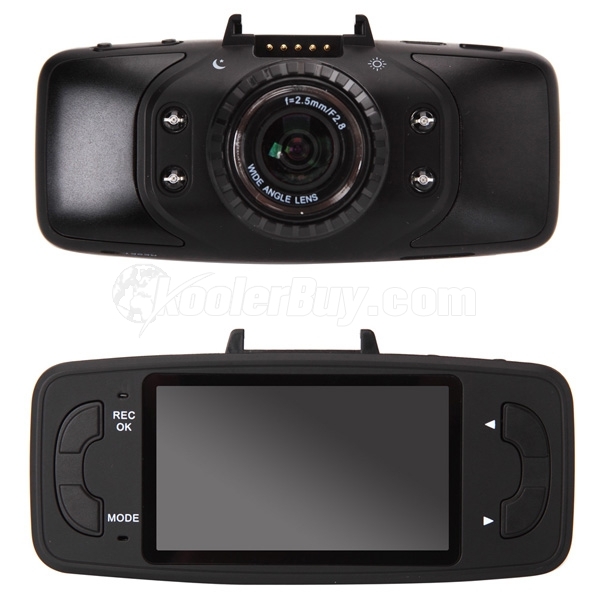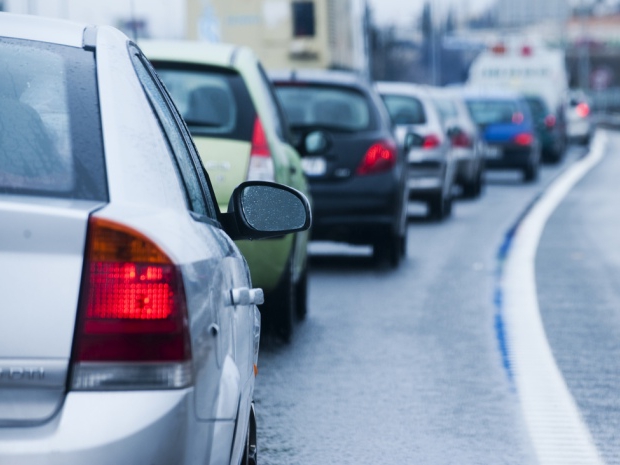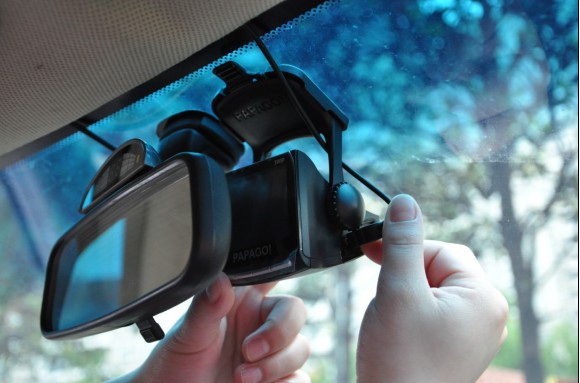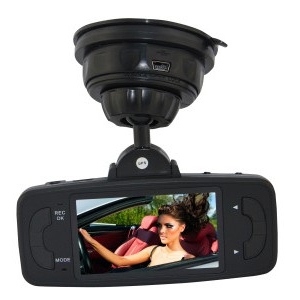A car is a source of considerable danger to which every road user is exposed.
It is not surprising that manufacturers and machine owners are working hard to reduce this risk. And if everything is clear with the first ones (airbags, new systems of active and passive protection of the driver and pedestrian), then what about the motorists themselves? What can they do?

Firstly, fully comply with traffic rules. Secondly, you can install a DVR. How can he help and how to choose a DVR? Our article is devoted to the answers to these questions.
And why is it needed at all?
Oddly enough, but the mass of options for its use. Note that there are very few truly universal devices of this class, and they perform their functions much worse than those models that are “sharpened” for a certain type of registration of road events. So what are DVRs for? The review below details this problem in detail.
Option one: this is an excellent tool for fixing the position on the road of vehicles at the time of an accident. Video recording of the accident serves as an excellent argument when trying to prove their innocence to the inspector of the traffic police. This is especially true in the case of a "complex" accident, in which several cars participated at once.
As a rule, “classical” methods almost never succeed in proving the guilt of a car owner. This is especially true for cases where the testimony of witnesses diverges significantly. And there is often no malicious intent here, since at the time of multiple blows the cars fly apart like skittles, so even the most calm and law-abiding drivers get it.
Not everything is so good ...
But many registrars turn out to be absolutely useless in those situations when the moment of the accident itself did not fall into the frame, or can only be identified by indirect evidence: a sharp displacement of the trajectory or a jerk forward (due to a rear impact) of the injured car. In this case, the correct reconstruction of the incident is much more difficult. Thus, an unconditional “plus” for those versions of registrars that have the ability to install additional rear-view cameras and the like “lotions”.
At the end of the article, we give a rating of DVRs, but for now, we’ll expand on the topic as widely as possible so that you can make your own conclusions.
Defend yourself from crime
Alas, sometimes even an accident is just “flowers” in comparison with all kinds of “bases” that occur regularly on the roads. Very often, criminal elements actively exploit guilt, and it turns out they have it perfectly.
Even the simplest registrar model will make it clear who is really to blame, and it will cool down unnecessarily hot heads quickly and for a long time. Alas, in this case too, “advanced” models are more often needed. The number of stupid “set-ups”, when the car of “entertainers” sharply slows down on a completely straight road or even begins to move backwards, decreases every year, and only those recorders that have the corresponding functionality can fix blows from the back or from the side.
Before choosing the “right” DVR, remember that the same device can help if you are unfairly accused of violating traffic rules, which actually was not.You can’t prove in any way that you didn’t exceed the speed, but if you have a recorder that ties a map of the area to GPS marks, while also recording speed, then you can quite easily deal with almost any attacks. Given that at the same time a video is taken of the terrain on which all road signs and markings are fixed (or its absence), then it is entirely possible to prove your innocence even in court.
Audio recording
It is not so rare that an inspector can behave rudely towards drivers, which also needs to be convincingly proved in court. In this case, the DVR may also help. But with this, certain difficulties may arise: the device must have either a camera that can be rejected in any direction, or connectors for connecting additional lenses. As a rule, there is no need for an additional microphone, since a standard device in most cases has quite acceptable sensitivity.
A few words about the ethical aspect
Finally, the recorder can be used to record other people's accidents. On any video service, you can see thousands of them. It must be remembered that such a video can be used to help those people who are in trouble. It will be just wonderful if you immediately give away copies of the file to both the traffic police and all drivers whose vehicles participated in the accident.
So how to choose the “right” DVR?
General results
That's how we figured out the goals for which the device can and should be purchased. Only by their description do the “outlines” of the device that you need to buy begin to emerge. And now let's describe those moments that the best DVR should be able to. Reviews, despite the banality of the requirements, indicate that many cheap models do not know how to do this in principle.
Firstly, the state registration number of the car should be read perfectly, as this is the decisive argument in all instances. Signs, markings and traffic lights should also be recorded in proper quality. Finally, the faces of road users and traffic police inspectors should also be clearly visible on the set.
Thus, the quality of the “picture” for this kind of technology is a paramount indicator. If the video is blurry, then even hundreds of especially useful “lotions” can be completely useless. So how to choose a DVR?
Design Features
Oddly enough, but most of the registrars belong to a very primitive group of equipment. In fact, this is a kind of “soap box” camera that can perform cyclic dubbing of video files. Thus, there are not so many design differences from the simplest digital cameras. If you want to choose a car DVR, do not forget about this.
The most vulnerable and “delicate” structural element is, of course, the lens. As a rule, in this case they are equipped with a hard focus, looking into "infinity". Of course, this greatly simplifies the production process, eliminates the need for at least some automation, but at the same time this circumstance requires high-quality optics to avoid blurring the frame.
That's just the last point, things are very, very bad. Almost all cheap models use the simplest lenses, analogues of which are still used in the most primitive outdoor surveillance systems. Naturally, we are no longer talking about any normal resolution. Contrary to popular belief, the point here is far from the plastic from which the lenses are made, since modern polymers in their performance characteristics are no worse than glass.
The problem is the quality of manufacture: when the lens is made by banal extrusion and rough grinding, it will not be possible to avoid display defects in any case.It should be remembered about the size of these "lenses", which are also used in the most waste mobile phones, in which the camera is only for a "tick". Keep in mind that cheap polymers have the disgusting ability to cloud over time, making the picture completely indigestible. In a word, it is not so easy to choose a car DVR.
So which lenses should you pay attention to?
Simply put, it is on the characteristics of the lens that you should pay all the attention. The larger his lens, the better. In addition, look at it from the side: for normal products of this kind, the surface of the plastic should be covered with a thin rainbow film, indicating the presence of an antireflection reagent. If the lens is glass or hybrid - you can assume that you are very lucky.
As a rule, the matrices of most registrars are made using CMOS technology. You can often find “FullHD-matrices” with two (!) Megapixels, the resolution of which does not exceed 1920 × 1080 pixels, which were in use three years ago, when they were installed in fairly simple and cheap camera models. But matrixes with a resolution of 1280x720 are also not uncommon! However, the above options are not so bad at all.
Just do not “get carried away” to the eloquent exhortations of sellers who assure that “it cannot be better”. Yes, today there are even such “miracles” as the resolution of 600x300 pixels, when you can look at the numbers on a shot video only under the condition of a sunny day and a clean road, but you should choose the maximum possible resolution. In the end, we are not professional photographers, and therefore it is precisely the number of pixels that should interest us the most.

Since choosing a DVR (reviews say the same) is most often necessary for year-round operation, camera resolution is very important. Try to distinguish the number in the conditions of a winter urban "mess" if instead of the registrar you have an analogue of an ancient tefon with a 0.3 MPix camera!
Some nuances
We can say that a high resolution matrix is good. But at the same time, some nuances must be taken into account. Since we are talking about a specific model of a video camera, the frame rate also plays a crucial role.
Keep in mind that most recorders use absolutely “awful” processors, for which even 30 frames per second in HD resolution is the ultimate ceiling. Choose only those models that can produce 50-60 frames per second. Of course, even with 30 frames, the picture will be quite sane, but in dynamic scenes it may not be enough. Given that any accident occurs extremely quickly, this factor can be critical.
If the recording will be carried out precisely at 50-60 frames, it will be very smooth, and the freeze frame can be set exactly at the moment when it is necessary. It should be noted that cheap matrices, in addition to low frame rate, have a wide dynamic interval, which is very bad for shooting in poor visibility conditions.
Other tricks manufacturers
Noticed that in stores you can often find even cheap registrars with exorbitant resolution indicators? As you might have guessed, in this case, manufacturers get out. Here are the types of DVRs:
• With "honest", hardware support for high resolution.
• With its software counterpart.
The fact is that in the second case, the normal hardware resolution is replaced by software (interpolation). Simply put, on the basis of a poor Chinese matrix, a more or less decent picture is built, for which special software algorithms are used. Not only do these algorithms themselves rarely improve video quality, but also a weak processor introduces unpleasant corrections into this disgrace. But from the point of view of marketing, everything is just fine - a huge number of "honest" pixels that an inexperienced buyer pecks at like a fish!
So, here are the main points that you should be guided by when choosing:
• FullHD - this is great, but only at a frame rate of at least 30 per second.
• Viewing angle - a minimum (!) Of 100 degrees.
• Pixels are only “honest”. No interpolation!
What is generally not worth using?
Practice shows that those registrars that issue a resolution below the level of HD quality are not suitable for use in principle. Remember that any HD-matrix without a normal lens is no good, since the image it produces will be suitable only for familiarizing with the brands of cars that participated in the accident.

On the recognition of numbers of speech will not go in principle. So if you will have access to a normal HD video recorder with a normal lens and a Full-HD model in which the lens is the size of a pinhead, then it is better to stop on the first option.
Backlight: advantage or disadvantage?
Separately, it must be said about the backlighting from LEDs, which sellers unanimously present as a virtue. But it’s better to remember that this is a marketing ploy.
It happens in two types: IR and in ordinary, visible light. Now think: how much light will a couple of LEDs give a very frail size? Not very much, to say the least. For example, even with inferior car headlights they just can not compete. But if it is very, very dark, and the car will stand still ... Can you imagine? LEDs can only be useful in the parking lot when both the car itself and the space around it are stationary.
In fairness, it should be noted that initially the whole point was that: in the "parking" mode, the registrar is activated when it records the movement. That's just in this case, the practical benefit is zero: even if someone “bumps” the car, the license plate or the face of the attacker will be indistinguishable, but for the night robbers, the registrar left in the car will be an excellent bait. And this is not to mention the fact that this device does not hurt to steal a car.
However, the meaning is still there. Before choosing a DVR for a summer residence, you can stop your attention on such models: such a device can help you find out who is stopping you from sleeping.
Experts say that the backlight in fact shines a maximum of one and a half to two meters. In ideal conditions, you can distinguish the numbers of the car in front, but nothing more. An aggravating circumstance may also be that the reflection in the windshield can become a real “headache” when viewing the shooting. It can make some frames completely unreadable. In a word, the absence or presence of backlighting is a secondary matter. Even if it is, it is better to turn it off altogether.
Before choosing a DVR for the home, first of all, pay attention to the quality of the optics and the shooting mode.
Layout and other design features

It just so happened that the traditional layout scheme is the concept of a monoblock, when all the components are located in one housing. But lately, more and more models have appeared, in which there are additional cameras taken out of the main structural unit. These include a “mirror” -video recorder, mounted instead of a real salon mirror.
Sometimes the desire of developers to "add viewing angles" comes to the point of absurdity. Judge for yourself: working with two or more Full-HD cameras, which requires considerable computing power, a device cannot be cheap by definition. Of course, there are models on the market with several high-resolution cameras, but only their cost to call “modest” does not turn the language.
So how to choose a DVR? Customer reviews indicate that the cost of a normal recorder with two or more high-resolution cameras starts at least 7-8 thousand. In the cheaper segment, there are no such models in principle.
About Stream Transfer
Here lies one more difficulty.It lies in the problem of transmitting such a stream of information. To prevent interference from the image, which in a modern car will be very much, a thick shielded cable is required. This not only does not reduce the cost of the product, but also makes it more noticeable, which is not desirable in all cases.
Mounting a recorder in a car
An important feature of the layout is the way the device is mounted in the car. Most often they are mounted on the windshield using a suction cup. Some install them on double-sided tape (Velcro). So that the registrars who put on the dashboard do not attract unwanted attention, their profile is made as low as possible. In addition, particularly convenient models allow mounting directly into the dashboard.
Of course, such recorders are extremely convenient from the point of view of their operation, but they are difficult to configure because of the microscopic size of the display. To fix this annoying flaw, manufacturers of such devices often release special applications for smartphones, which make the control panel a kind of latter. In addition, it is possible to broadcast the captured video on the smartphone screen.
The largest and most functional devices are still most often fastened with Velcro. But when using them, you need to consider that leaving such a recorder overnight in the car is frankly risky, because due to its size and visibility it will be an excellent bait for robbers. An ideal example is a “mirror” DVR. On the road, such a device will be invisible, but the eye robbers are well-marked.
About quick withdrawal
As a rule, suction cup models are especially popular due to the fact that their design provides for the possibility of quick removal. It’s just that you can’t perform this action really fast, since you can’t definitely take off the suction cup that has sticked well It is better to pay attention to those models in which the mounting bracket is combined with the contact group: if necessary, you can quickly remove the device from the bracket, and there will be no wires or other “evidence” in this case.
One more thing. The more sophisticated and longer the bracket itself, the more hinges it is equipped with, the less desirable it is to purchase it! This is due to the fact that it will vibrate strongly on a broken road, and these vibrations will perfectly display on the captured video. In addition, even inaudible vibrations and creaks of the human ear will be perfectly “caught” by the microphone, and therefore the recording will turn into a nightmare.
Useful and useless options.
Finally, it's time to describe all sorts of “lotions” that are actively advertised by sales consultants. For example, the “built-in” battery option is widely advertised, but in practice it turns out that its capacity is so scanty that the battery lasts for a maximum of several seconds of operation.
But the casket opens simply: as a rule, there is no battery there, but there is an ionistor, which is ten times cheaper, but it does disgusting battery functions. The declared regular update is much more useful, since it can really add new functions, and the current list of stationary traffic police posts and cameras will certainly not be superfluous.
Recently, a huge number of hybrid devices (with a radar detector, for example) have appeared in this segment. How to choose? A navigator with a DVR is often useless, since the quality of the camera in such a device is rarely decent. But the recorder, which additionally has a good display and the ability to download cards, is clearly a good choice.
And how to choose a DVR with a radar detector? In this case, you need to focus on the manufacturer: do not buy such combined devices that are made by unknown Chinese, since you can not wait for high quality from them.In addition, the cost of such a device will start from eight thousand rubles and above.
Is there any rating for DVRs? From the point of view of domestic experts, the TOP-5 is formed by the following models:
• Mio MiVue 538.
• Texet DVR-5GP.
• TrendVision TV-103.
• FRAME QS3 eco.
• Neoline Ringo.
Note! The cost of these devices is within five thousand rubles. All that is cheaper - you should not buy in principle, since the quality of shooting there is simply insane. And how to choose an inexpensive DVR? If you don’t have much finances, buy a device with the highest resolution (without interpolation!), With one camera (two such a recorder will not pull anyway), with a complete absence of “lotions”. In this case, there is a chance to get good and affordable equipment.
findings

So, what conclusions can be drawn after reading all of the above material, how to choose a DVR? Firstly, the registrar should be non-removable, but at the same time as inconspicuous as possible. Secondly, it should have several Full-HD cameras and at the same time be able to connect via CAN-bus to the car’s speedometer.
Without this, you will not have a reliable excuse if you are accused of violating the speed limit: in any case, the driver should be guided precisely by the readings of the vehicle’s speed sensor, and whether it is working or not is a question for the car manufacturers. Such a registrar can be considered a real "black" box on which your entire route will be recorded. And how to choose a car DVR with such impressive features?
Alas, in reality there are no such models yet. Therefore, we give a list of those options that must necessarily be in this kind of device. Before choosing a car DVR, be sure to pay attention to their presence or absence.
- The presence of a normal lens, preferably a glass one.
- "Honest" Full-HD mode without interpolation.
- The presence or ability to connect additional cameras.
- Compact size.
- The ability to quickly and seamlessly dismantle.
- At least two recording modes: cyclic and continuous.
- Support for 32/64 GB memory cards. Capacity in such cases will not be superfluous. Important! If you need to choose a memory card for the DVR, buy only those models that support high write and read speeds. For Full-HD mode, this is very important!
- Location-based GPS tracking.
- An honest manufacturer who does not abandon software updates of their devices.
Here's how to choose a dash cam. If you focus on your real needs, and not on the desires of a sales assistant, you can buy an excellent registrar for relatively little money.
